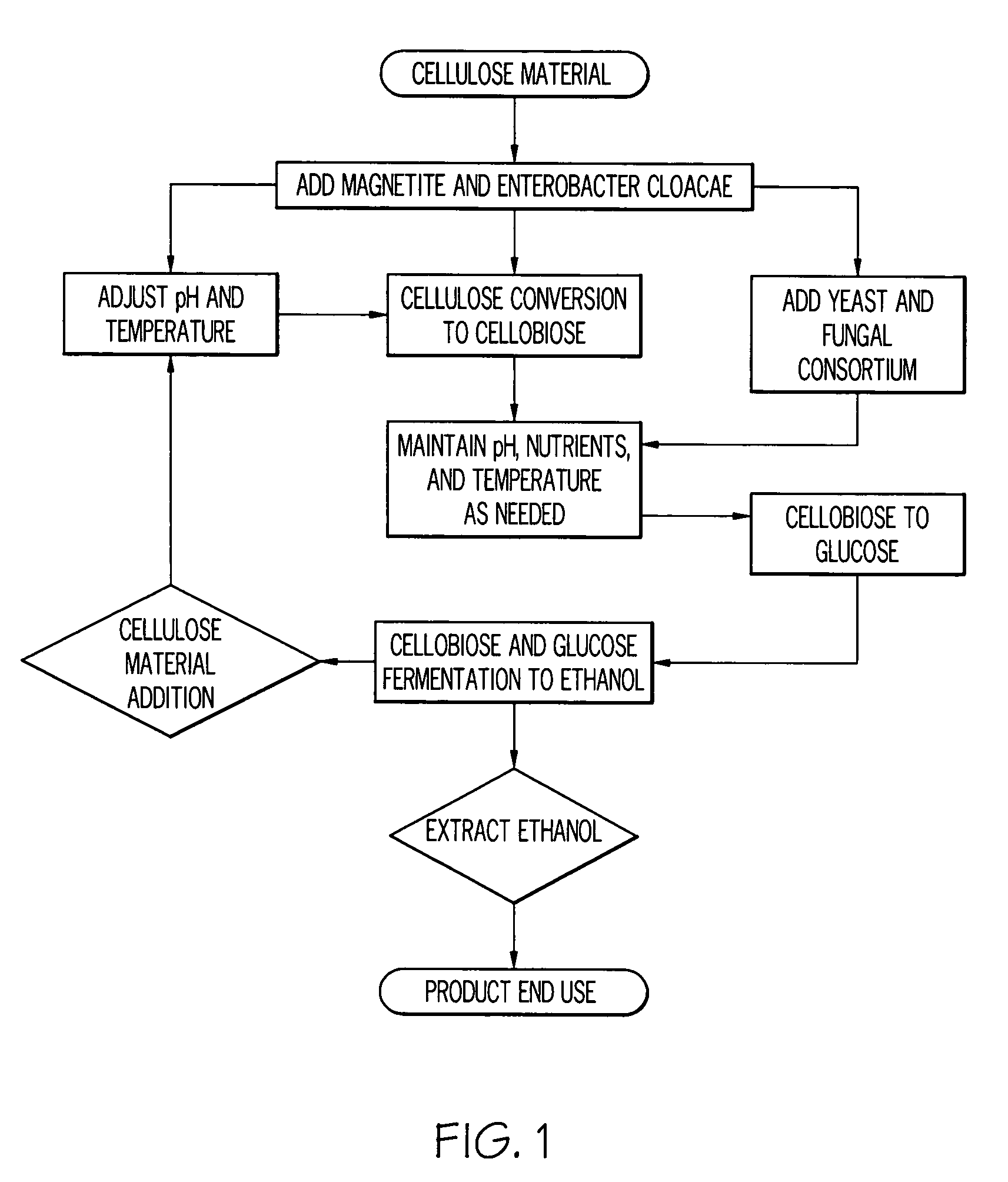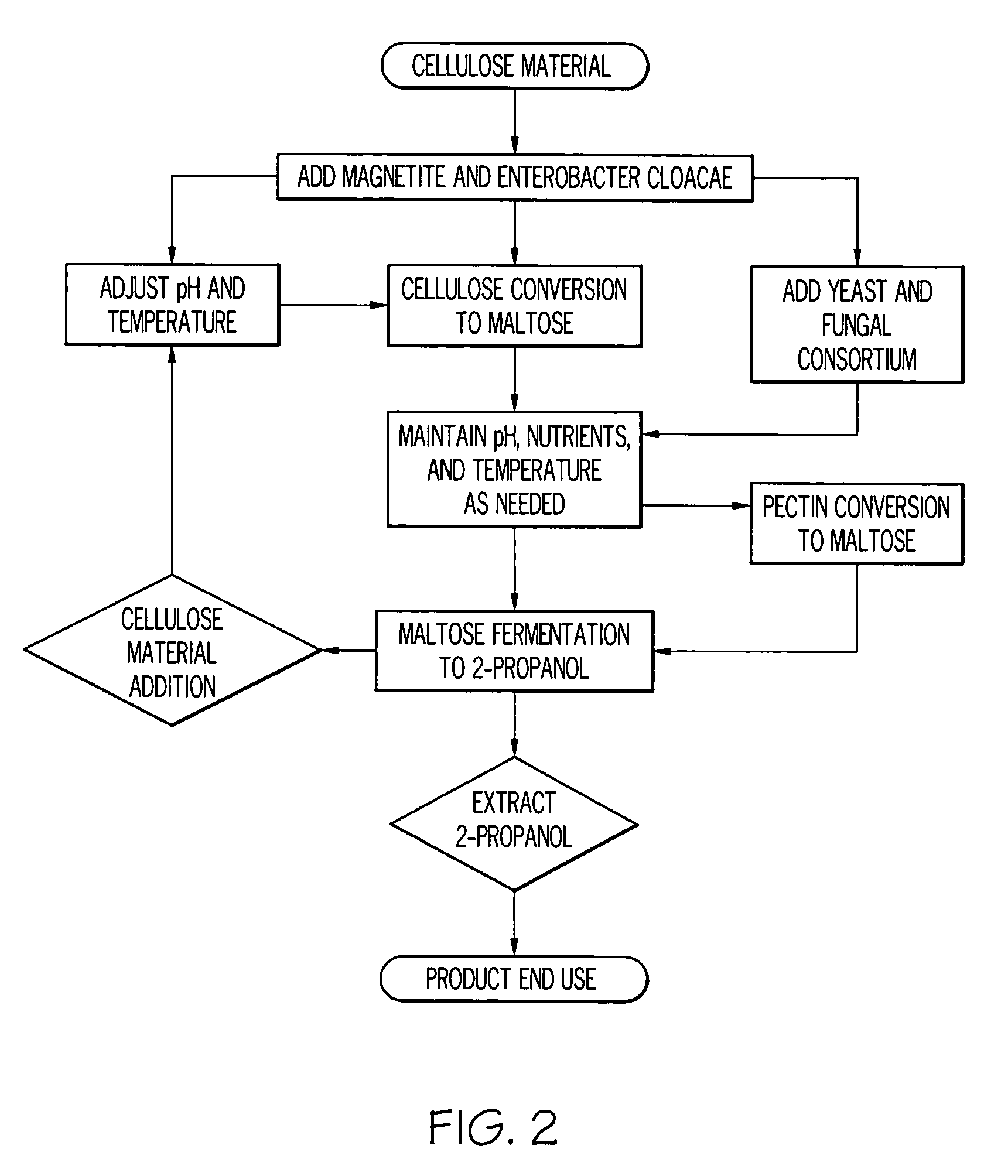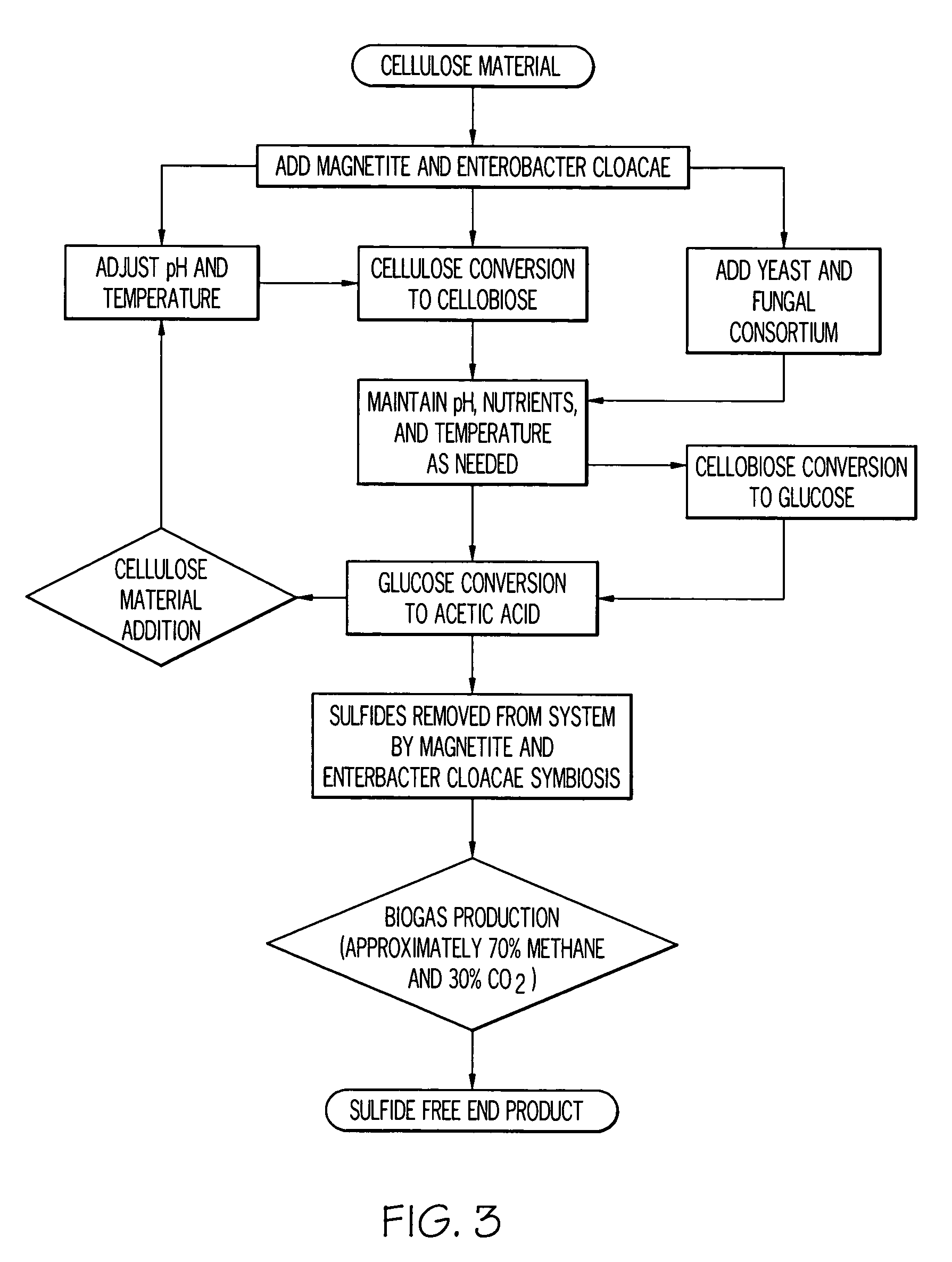Process for producing ethyl alcohol from cellulosic materials
a cellulosic material and ethyl alcohol technology, applied in the direction of fermentation, biofuels, etc., can solve the problems of difficult process to convert cellulose to yeast fermentable sugar, difficulty in dumping waste acid materials, etc., and achieve the effect of efficient and economical production
- Summary
- Abstract
- Description
- Claims
- Application Information
AI Technical Summary
Benefits of technology
Problems solved by technology
Method used
Image
Examples
example 1
[0079]Example 1 illustrates a process whereby a microbial and fungal consortium was employed to produce high grade ethanol and 2-propanol from by product sugar beet pulp.
[0080]The microbial inoculum was first prepared by adding approximately 1 ml of a stock solution including Enterobacter cloacae to 25 g of Brewer's thioglycollate medium and autoclaving at 120° C. for about 45 minutes. The medium is then cooled to about 30° C. Mass doubling time for the bacteria is approximately 15-20 minutes. After 24 hours, the bacterial population in the culture is approximately 1×108 to about 1×109.
[0081]Sugar beet pulp was mixed with water at a ratio of 25% sugar beet pulp to 75% water to produce an aqueous sugar beet pulp mixture. Sucrose and other constituents were harvested from the aqueous sugar beet pulp mixture leaving cellulose, hemi cellulose, and pectin.
[0082]A 1 liter sample was spiked at initiation with 0.2 to 0.3 milliliters of molasses per liter and glucose in an amount of 0.8 gram...
example 2
[0096]It has been found that the maximum amount of ethanol which can be produced is limited by the yeast fermentation. Above about 12.5% ethanol, by weight of the total reactor ingredients, the yeast is poisoned by its own ethanol discharge and 2-propanol production begins.
[0097]Therefore, the amount of cellulose placed into the system was decreased for example 2.
[0098]The bacteria were cultured as described for Example 1, above. The following ingredients were employed:
900 g distilled water
100 g cellulose (sugar beet pulp)
[0099]Phosphorous and nitrogen were added
20 g yeast extract
1 g magnetite
10 g molasses
8 g dextrose
25 g Brewer's thioglycollate medium with bacteria
10 g Bacto-peptone protein source
The following steps were followed:
1. The Brewer's thioglycollate medium was autoclaved at 120° C. for 45 minutes.
2. The medium was allowed to cool to 30° C.
3. The reactor, having the remaining ingredients, was inoculated with the medium having the bacteriological consortium at a pH between...
PUM
| Property | Measurement | Unit |
|---|---|---|
| temperatures | aaaaa | aaaaa |
| oxidation reduction potential | aaaaa | aaaaa |
| total weight | aaaaa | aaaaa |
Abstract
Description
Claims
Application Information
 Login to View More
Login to View More - R&D
- Intellectual Property
- Life Sciences
- Materials
- Tech Scout
- Unparalleled Data Quality
- Higher Quality Content
- 60% Fewer Hallucinations
Browse by: Latest US Patents, China's latest patents, Technical Efficacy Thesaurus, Application Domain, Technology Topic, Popular Technical Reports.
© 2025 PatSnap. All rights reserved.Legal|Privacy policy|Modern Slavery Act Transparency Statement|Sitemap|About US| Contact US: help@patsnap.com



